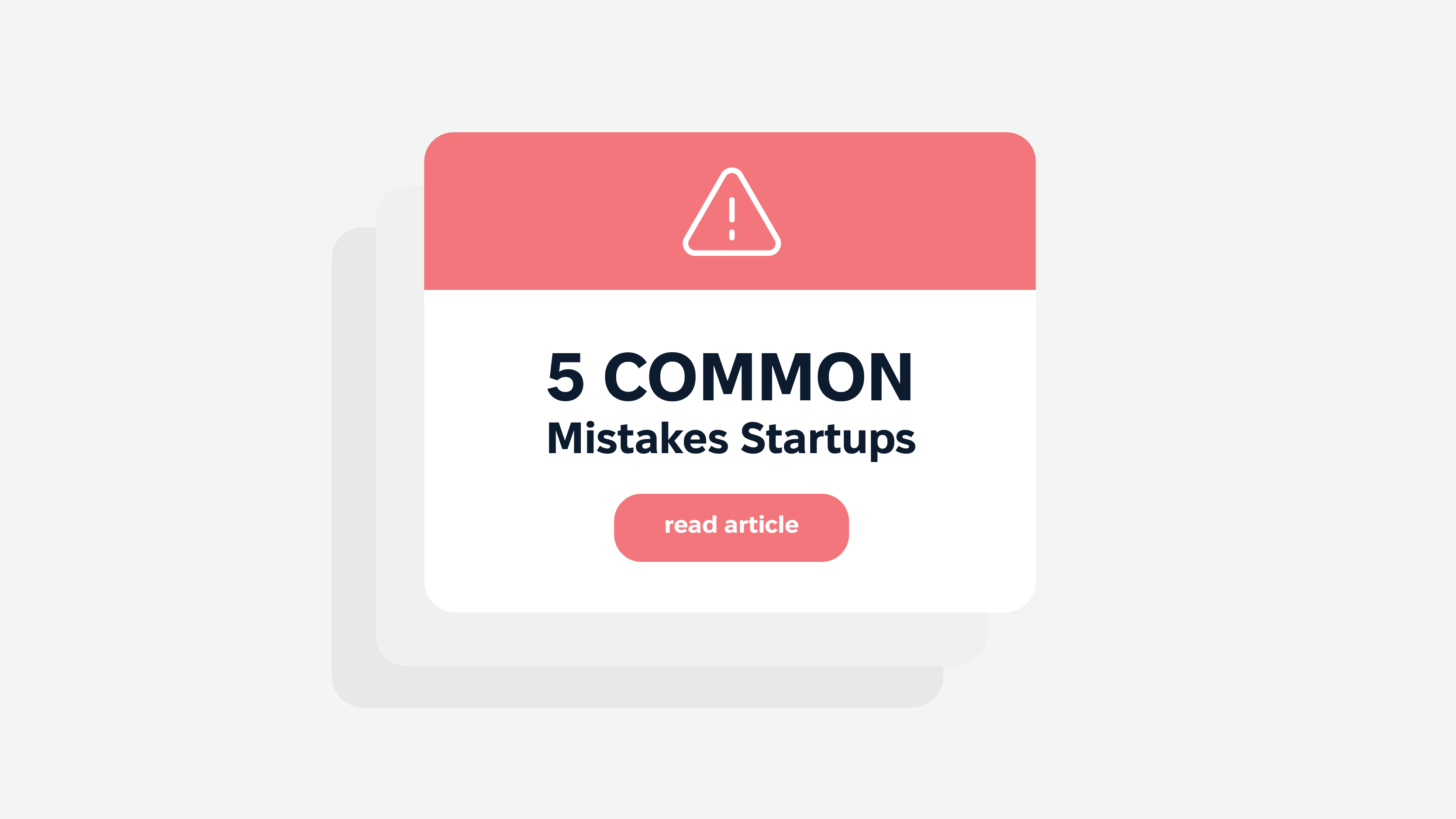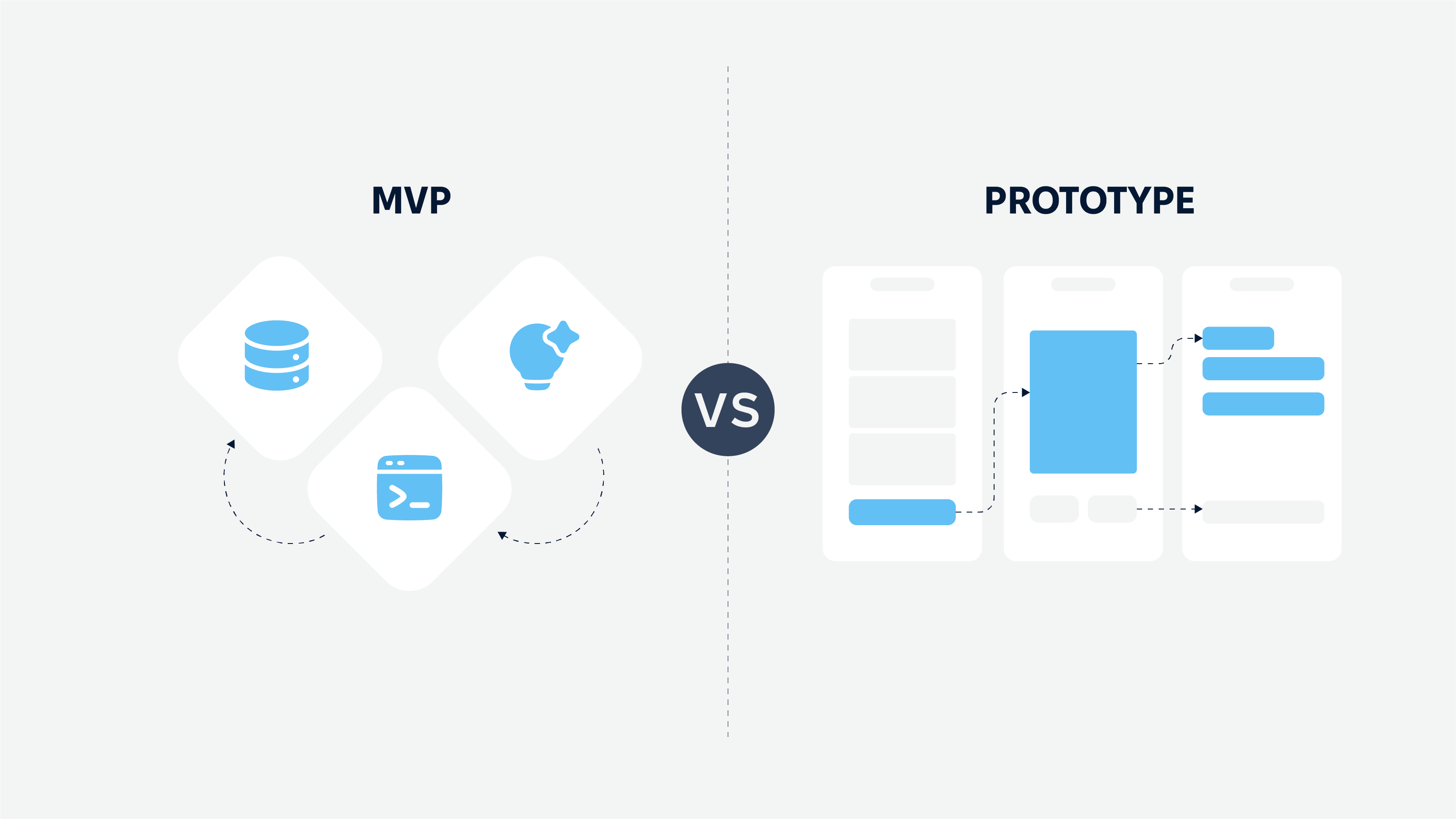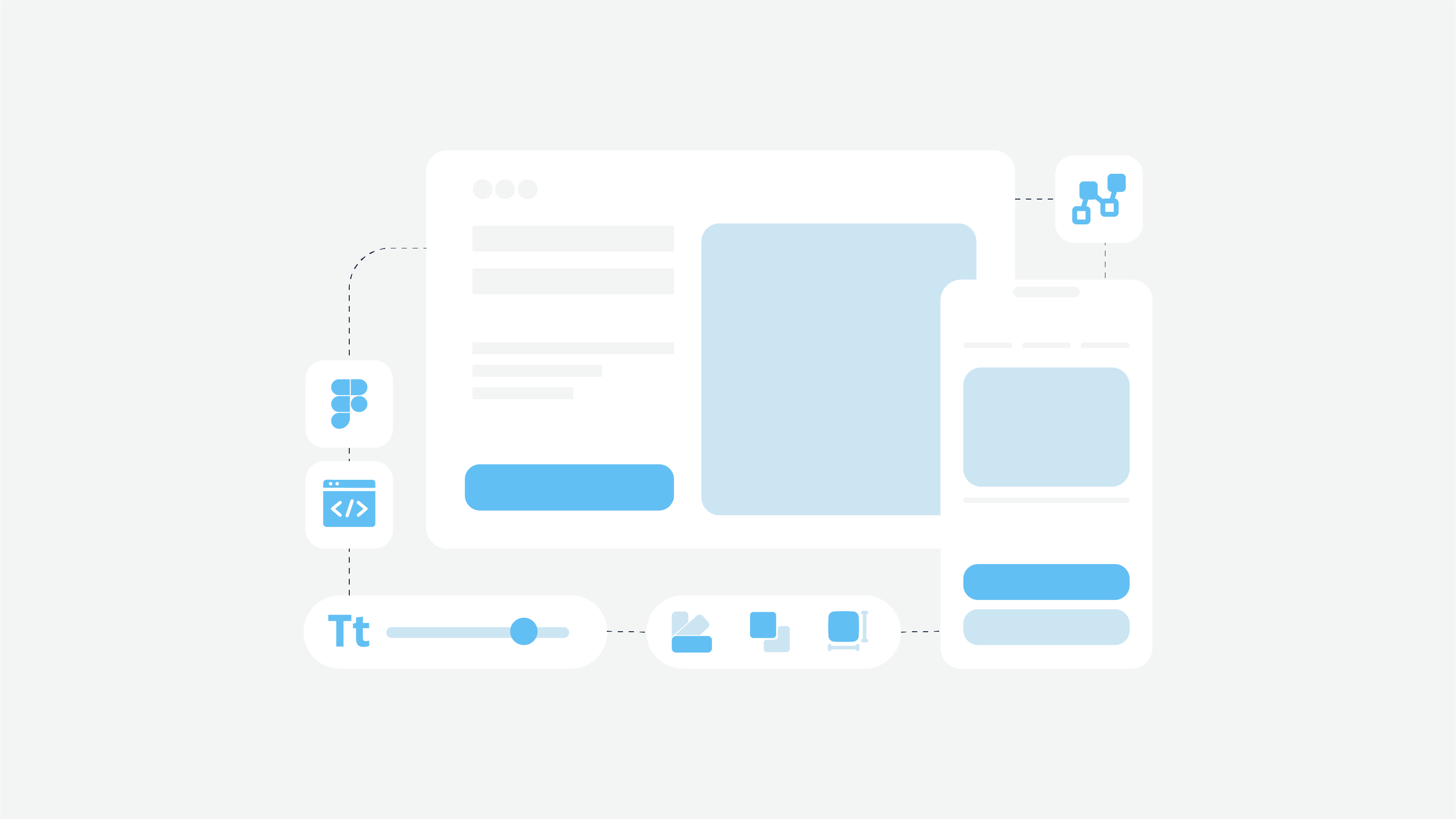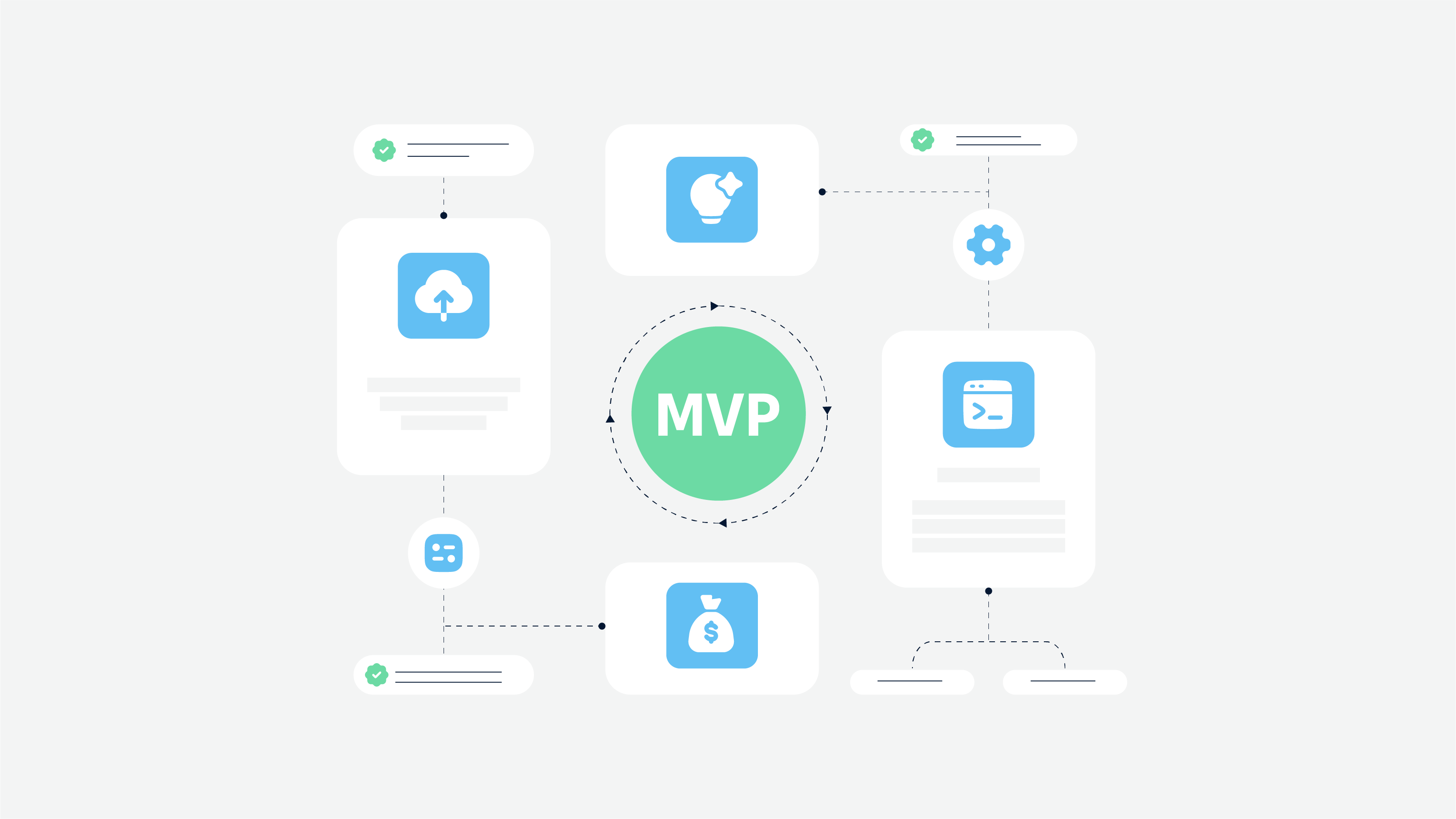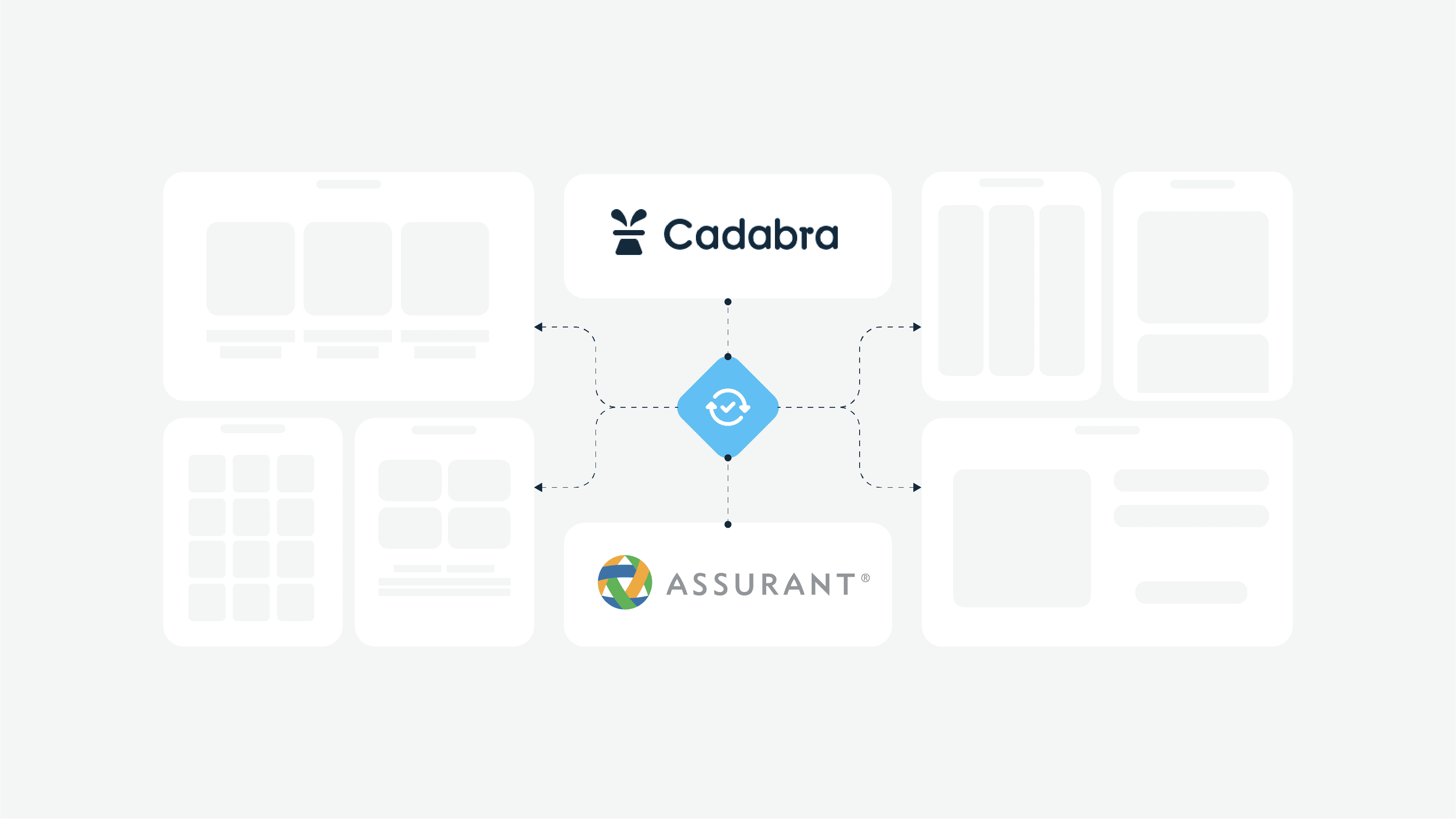At the beginning of every great startup journey, there’s a critical decision to make: how to build the first version of the product. A well-crafted business plan is essential for securing funding and ensuring long-term success. For most founders, especially in the early stages, assembling a full in-house development team isn’t feasible. Outsourcing becomes the natural choice – a shortcut to getting your vision into users’ hands.
However, outsourcing is a double-edged sword. Done right, it accelerates growth. Done poorly, it drains resources, kills momentum, and leaves startups scrambling to repair the damage. Behind every success story are lessons about what to do – and what not to do.
This article dives into the common mistakes startups make when outsourcing development and how founders can steer their ship toward success.
Introduction to Software Development Outsourcing
Software development outsourcing is the process of delegating software projects to a third-party provider, allowing companies to leverage external expertise and resources to achieve their technology goals.
This approach enables businesses to focus on their core competencies while outsourcing non-core tasks, such as software development, to skilled professionals. By outsourcing software development, companies can tap into innovative IT solutions, reduce operational costs, and improve decision-making.
In the tech world, outsourcing software development has become a common practice, especially among startup founders who require sustainable growth and cost-effective solutions. This strategy not only helps in managing operational costs but also accelerates growth by providing access to a pool of talented software developers who can bring fresh, innovative ideas to the table.
Benefits of Outsourcing
Outsourcing software development offers numerous benefits, including cost savings, increased efficiency, and access to specialized expertise. By outsourcing software development, companies can reduce their operational costs, improve productivity, and focus on their core competencies. Additionally, outsourcing allows businesses to tap into innovative, scalable, and customized solutions that meet their specific needs.
In the early stages of a startup, outsourcing software development can be particularly beneficial, as it enables founders to conserve cash flow, prioritize the sales function, and exceed expectations.
Moreover, outsourcing software development can help companies navigate different stages of growth, from seed funding to funding rounds, and ensure sustainable growth. This approach allows startups to remain agile, adapt to market changes quickly, and focus on delivering value to their potential customers.
Pre-Seed Considerations
Pre-seed funding is a critical stage for startups, where careful planning can make or break your journey toward sustainable growth. Startup founders must focus on developing a solid business plan that not only outlines their vision but also addresses the practicalities of assembling the right team and securing initial funding.
In this stage, prioritizing the creation of a scalable solution is paramount. Managing cash flow effectively and exceeding expectations can attract potential investors and set the foundation for future funding rounds.
A well-structured business plan acts as a roadmap, guiding startups through different stages of funding, from seed funding to subsequent rounds. It helps in making informed decisions about operational costs and resource allocation. Understanding your target audience, staying abreast of market trends, and clearly defining project requirements are essential steps in developing innovative solutions that meet customer needs.
By focusing on these elements, startups can navigate the competitive tech world more effectively and position themselves for long-term success.
Mistake 1: Choosing the Cheapest Vendor Instead of the Right Partner
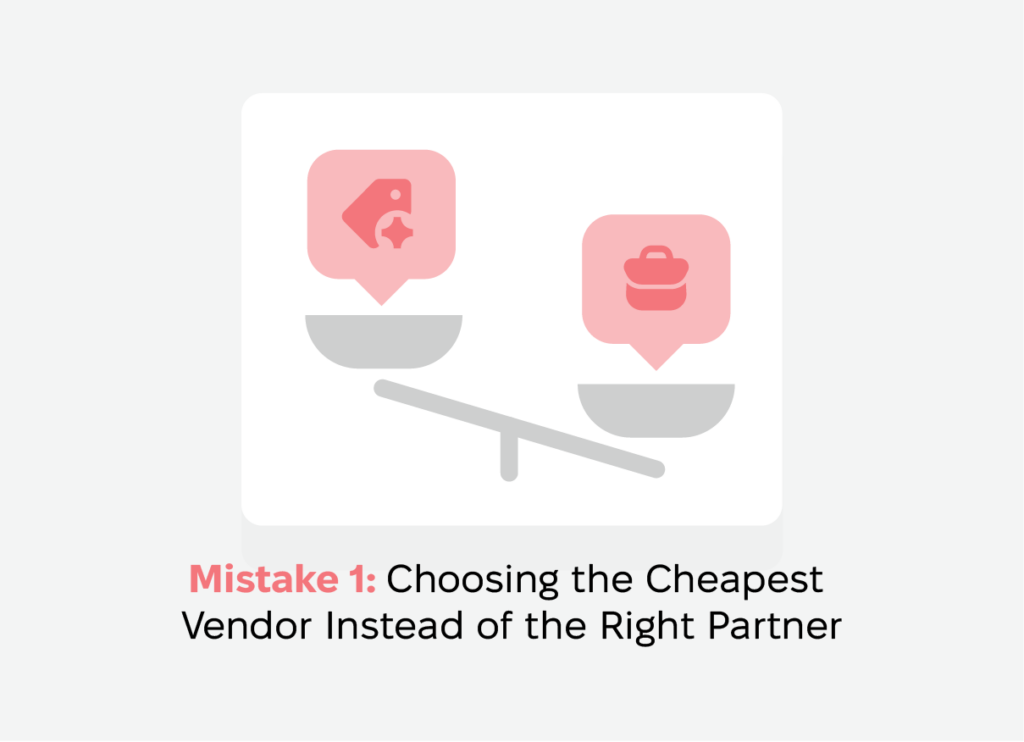
Imagine you’re at the starting line with limited funds and big dreams. A development partner offers you a deal that seems too good to be true – and it is. The relationship quickly sours as timelines slip, quality deteriorates, and what was supposed to be a “quick MVP” turns into a salvage operation. Founders often prioritize price over value, but building a product is like building a house: cutting corners at the foundation leads to cracks you’ll pay for later.
The right partner will ask tough questions, push your thinking, and care as much about outcomes as you do. Smart founders learn to look beyond the price tag. They seek partners who understand their domain, challenge their assumptions, and see the product through the lens of user value – not just code delivery. Understanding the industry and leveraging data for decision-making are crucial for ensuring the success and sustainability of your venture.
Mistake 2: Poorly Defined Project Requirements and Expectations
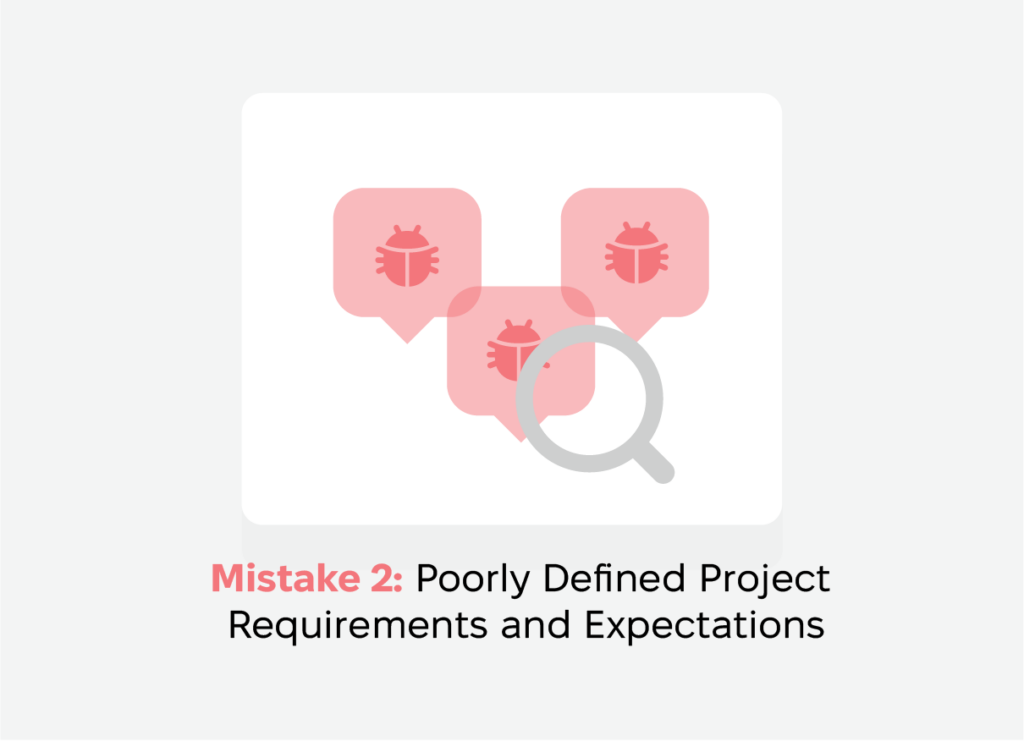
Outsourcing without clear requirements is like setting sail without a map. You may leave the harbor full of excitement, but you’re unlikely to reach your destination. We’ve seen founders jump into development based on a napkin sketch or a five-minute verbal briefing. Then comes the confusion: “This isn’t what I envisioned. Why did they build it this way?”
Clear project documentation isn’t bureaucracy; it’s liberation. It sets boundaries, expectations, and shared understanding. Early prototypes, wireframes, and detailed user flows save weeks – even months – of miscommunication. At Cadabra Studio, we often help founders sharpen their vision before a single line of code is written. A few days of deep alignment early on can prevent months of heartache later.
Mistake 3: Lack of Regular Communication and Alignment
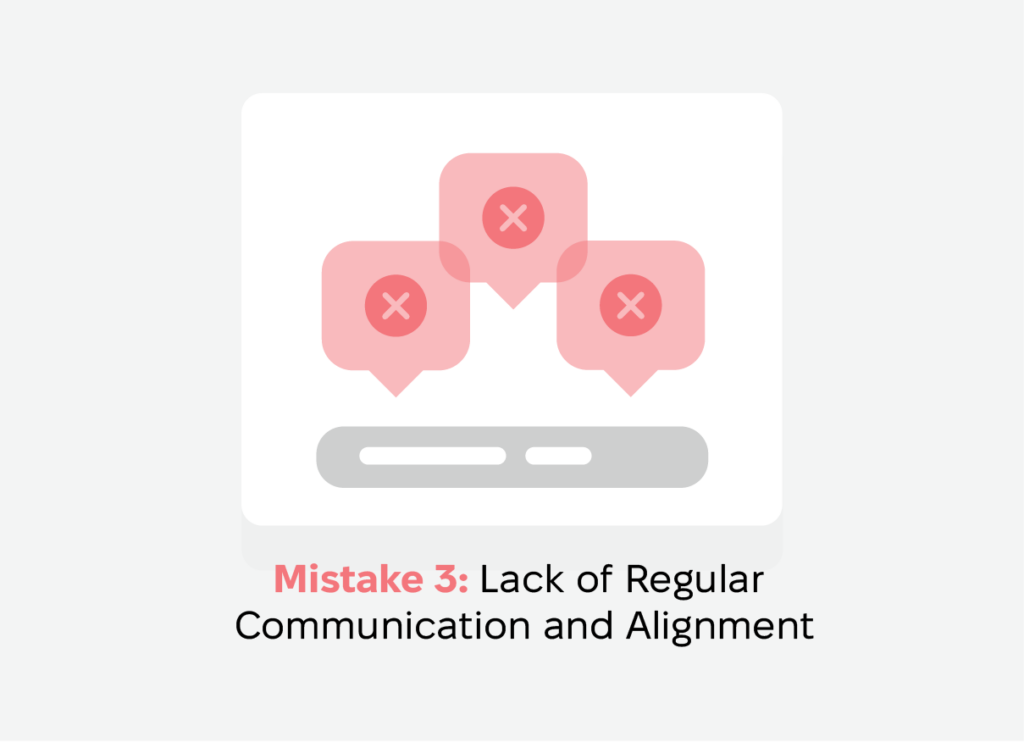
Picture two teams: one startup team eagerly awaiting updates and another outsourced team coding away in silence. Weeks pass. When they finally reconnect, the product is far from what the founders expected. Communication isn’t “extra” – it’s the bloodstream of successful outsourced development.
The best founder-outsourcing team relationships feel like true partnerships. Regular standups, demo days, transparent backlogs, and quick feedback loops create a rhythm. Everyone knows where things stand, what’s blocked, and what’s next. Founders who stay involved without micromanaging build better products faster.
Mistake 4: Ignoring UX and Product Thinking
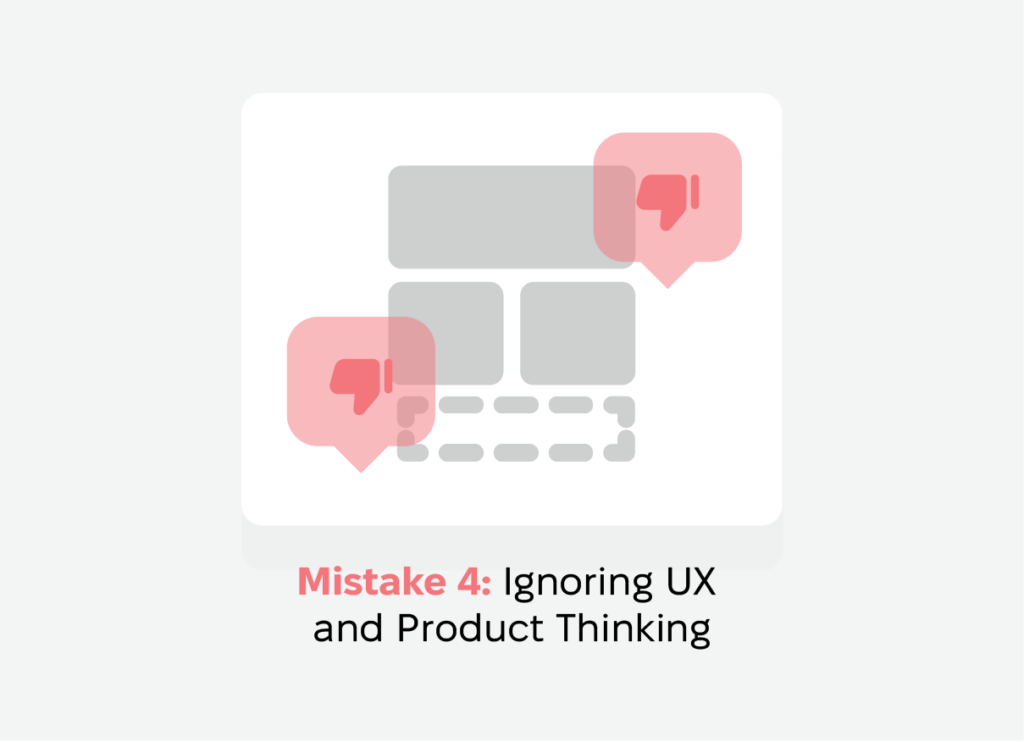
Many early-stage founders believe “If it works, that’s enough.” It isn’t. Innovation in leveraging AI and machine learning (ML) is crucial for enhancing user experience. Users judge your product not just by what it does but by how it feels. Poor UX creates friction. Friction creates churn. And no amount of backend magic will save a product that users hate interacting with. One founder we worked with initially viewed design as “icing on the cake.”
After launching a product with minimal UX thinking and seeing dismal adoption, they came back and invested heavily in reimagining the user journey. The second launch succeeded – but it was a painful, avoidable detour. Early UX investment is like sharpening your axe before chopping the tree. Outsourcing partners must think in terms of user journeys, not just feature checklists.
Mistake 5: Not Planning for Post-Launch Support and Maintenance

The day you launch isn’t the end. It’s the beginning. Yet, too many startups treat outsourcing as a “one-and-done” transaction: Build it, launch it, move on. The reality is messier: bugs emerge under real-world usage. Early adopters ask for features. Investors request new demos.
Security standards evolve. Startups that neglect post-launch plans find themselves scrambling to reassemble teams, paying premium rates for “urgent fixes,” and losing valuable momentum. Smart founders bake support and iteration into their outsourcing relationships from day one. Agile, continuous improvement isn’t just for big tech companies – it’s survival mode for startups.
Front-End Development
Front-end development is a crucial aspect of software development that directly impacts user experience and overall product quality. Skilled professionals with expertise in front-end development can help startups create customized solutions that are both visually appealing and highly functional. By leveraging the latest technologies and innovative IT solutions, software developers can build scalable and efficient front-end applications that drive business growth.
Effective front-end development goes beyond aesthetics; it enhances decision-making, boosts customer engagement, and reduces downtime, ultimately leading to increased revenue and productivity. As the tech world continues to evolve, startups must stay focused on delivering high-quality front-end development solutions that meet the expectations of their target audience and exceed industry standards. Investing in top-notch front-end development is not just about creating a beautiful interface; it’s about ensuring that your product is intuitive, user-friendly, and capable of driving sustainable growth.
Outsourcing Destinations
Latin America has emerged as a popular outsourcing destination for software development, offering access to skilled professionals, competitive costs, and favorable time zones. Many startups and companies are now looking to outsource their software development needs to countries in Latin America, where they can find the right talent and expertise to drive their projects forward. By outsourcing to Latin America, businesses can reduce their operational costs, improve efficiency, and accelerate their time-to-market, ultimately gaining a competitive edge in the industry.
However, it’s essential for companies to carefully evaluate their outsourcing options, considering factors such as cultural alignment, language barriers, and infrastructure, to ensure a successful partnership. With the right outsourcing destination and partner, businesses can tap into a pool of skilled software engineers and developers, driving innovation and growth in their organization. Latin America offers a unique blend of technical expertise and cost-effectiveness, making it an attractive option for startups looking to scale their operations efficiently.
Cost-Effective Solutions
Cost-effective solutions are critical for startups and businesses, especially in the early stages of development, where budget constraints can be a significant challenge. By adopting cost-effective solutions, companies can allocate their resources more efficiently, reduce waste, and focus on driving growth and innovation. Many startups have successfully implemented cost-effective solutions, such as outsourcing software development, to reduce their operational costs and improve productivity.
Cost-effective solutions can also help businesses improve their sales function, enhance customer support, and develop more efficient processes, ultimately leading to increased revenue and competitiveness. As the business landscape continues to evolve, companies must stay focused on delivering cost-effective solutions that meet the needs of their customers while also driving sustainable growth and profitability. By strategically managing their budget and resources, startups can overcome financial challenges and position themselves for long-term success.
Project Management
Effective project management is crucial for successful software development outsourcing. A skilled project manager can ensure that the project is completed on time, within budget, and to the required quality standards. By outsourcing software development, companies can leverage the expertise of experienced project managers who can handle the entire software development life cycle, from definition and design to development and testing.
Moreover, project management tools and techniques can help track progress, manage teams, and ensure that the project meets the required milestones. In the tech world, project management is essential for ensuring that software development projects are delivered efficiently, effectively, and to the highest quality standards.
By outsourcing software development, companies can tap into the expertise of skilled professionals, reduce downtime, and improve decision-making, ultimately leading to increased revenue, improved customer satisfaction, and sustainable growth. This strategic approach ensures that projects not only meet but also exceed expectations, positioning the company for long-term success.
How to Choose the Right Outsourcing Partner for Your Startup
Choosing a development partner is like choosing a co-founder. You’re entrusting them with your vision, your brand, and your future. Look for teams who:
Understand the early-stage chaos and embrace iteration.
Value UX and product-market fit as much as technical architecture.
Understand different industries and leverage modern technologies to provide innovative solutions.
Communicate proactively and transparently.
Challenge you thoughtfully when needed.
Have battle scars from startup journeys – not just agency experience.
Your product deserves a partner who acts like an owner, not a vendor.
Real-World Lessons: Remedy Logic's Journey
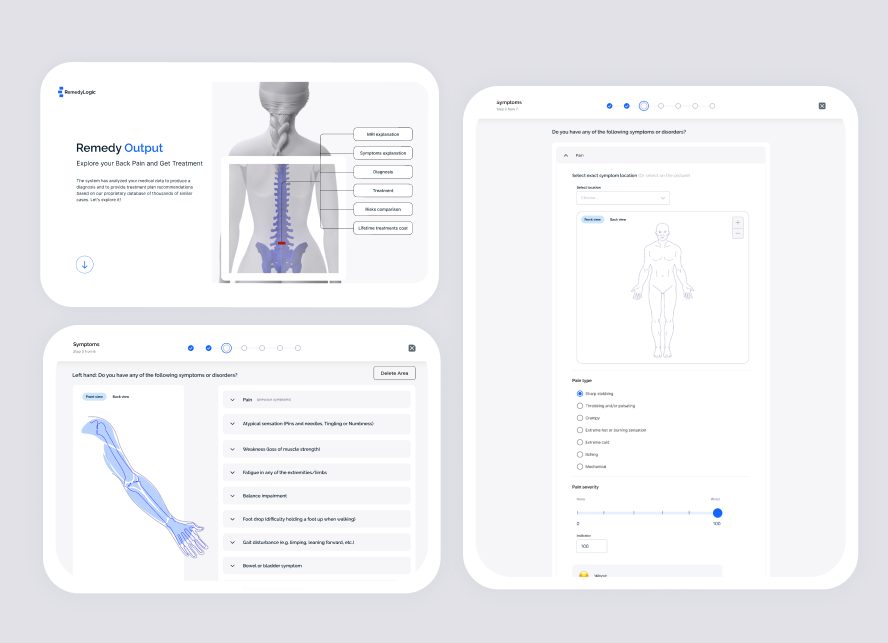
When Remedy Logic, a health tech startup, approached Cadabra Studio, they weren’t just looking for coders. They were looking for a strategic partner who could bring their complex AI-driven radiology platform to life – and position them for rapid growth. Together, we tackled immense challenges:
Designing an intuitive interface for radiologists analyzing spine MRIs.
Building a scalable, HIPAA-compliant backend architecture. The expertise and dedication of our software engineers were crucial in developing high-quality solutions that exceeded client expectations.
Ensuring performance and accuracy under demanding clinical conditions.
The collaboration wasn’t frictionless – no good partnership is. But because expectations were clear, communication was constant, and UX was prioritized, the project moved fast without sacrificing quality.
The result?
Remedy Logic not only launched successfully – they secured nearly $5 million in VC funding, powered by a platform investors recognized as technically and experientially strong. Choosing the right outsourcing partner didn’t just help them build a product. It helped them build a business.
How Cadabra Studio Helps Startups Outsource Smarter
At Cadabra Studio, we’ve lived the startup journey from many angles. We understand the importance of aligning with clients’ time zones for better communication and collaboration. We know the adrenaline, the constraints, the ambition, and the fears.
That’s why our “Create From Scratch” approach is designed for early-stage founders who need more than a dev shop. They need a thinking partner.
We offer:
Product workshops to crystallize your vision.
UX/UI design sprints to map real user journeys.
Agile development teams that iterate fast and smart.
Technical architecture that scales beyond MVP.
Front-end development to create user-friendly interfaces.
Post-launch support to keep momentum alive.
Our mission isn’t just to build what you ask for – it’s to build what your users will love.
Conclusion
Outsourcing can either be your startup’s unfair advantage or its Achilles’ heel. By treating outsourcing as a strategic partnership – and avoiding these common pitfalls: chasing the cheapest deal, neglecting clarity, ignoring UX, communicating poorly, and skipping post-launch plans – you stack the odds in your favor.
Your first product isn’t just “a project.” It’s your handshake with the market. It deserves the best possible foundation.
Ready to build your startup product the right way – from scratch to scale?
Frequently Asked Questions
Why Do 90% of Startups Fail?
Many startups fail due to a lack of market need, poor business models, and inadequate funding. Strategic hiring is crucial to avoid financial pitfalls, as rushing the hiring process can lead to higher turnover rates and increased costs. Understanding these pitfalls can help founders prepare better and increase their chances of success.
What is the #1 Reason Why Startups Fail?
The top reason startups fail is a lack of market need. Effective marketing strategies are crucial to understanding and reaching the target audience. Without a clear understanding of the target audience and their needs, even the most innovative solutions can fall flat.
What is the Success Rate of Pre-Seed Funding?
Pre-seed funding success rates vary, but early-stage startups with a clear vision and strong team often attract investors. Emphasizing product quality is crucial, as investors are more likely to support a startup that demonstrates high standards and potential for market success. Engaging with the right talent and showcasing potential growth can improve outcomes.
What Happens in the Early Stages of a Startup?
The early stages of a startup involve ideation, validation, and building a minimum viable product (MVP). Engaging with teams in Latin America during these stages can provide strategic advantages, such as time zone alignment with clients in the US, which facilitates better communication and collaboration. These stages set the foundation for sustainable growth and future funding rounds.
What are the 7 Stages of a Startup?
Ideation: Developing and refining the core idea.
Validation: Testing the idea with potential customers.
Seed Funding: Securing initial investment to build the MVP.
Product Development: Creating the initial version of the product.
Market Entry: Launching the product and acquiring early adopters.
Growth: Scaling operations and expanding the customer base.
Maturity: Achieving a stable market position and optimizing for efficiency.

